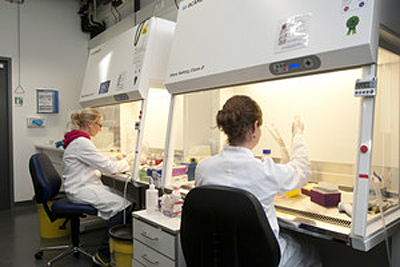25 Oct 2016
Educational awards worth thousands in EO products and support disbursed among students and universities.
Edmund Optics, Barrington, NJ, US, has named the winners of its 2016 Educational Awards. The company presents awards each year to recognize “outstanding undergraduate and graduate optics achievements” in optics-related areas. The prizes are a combination of thousands of dollars-worth of EO products and matching grants.
The company established the Educational Awards to support research and development work in science, technology, engineering and mathematics at colleges and universities worldwide. A total of 30 global awards are made each year; 15 in the Americas and Asia-Pacific combined, and 15 in Europe. This year’s 30 winners were whittled down from more then 600 applications, reflecting the significant global interest in both the recognition and equipment prizes from the 74-year-old company.
The winners – GoldAmericas ($10,000 in products) University of Wisconsin-Madison, USA —Edgar Spalding’s project researches the genetic control of plant development with high-resolution machine vision assays. The customized method uses IR-sensitive CCD cameras equipped with macro-zoom lenses fronted with a long-pass filter.
The ability to measure very small differences in growth rate between strains of corn can help plant breeders select a superior variety, but the challenge is identifying the mechanisms corn plants use to germinate and become vigorous seedlings under adverse conditions of water deficit and low temperature.
Europe (€7,000 in products) DZNE Munich — German Center for Neurogenerative Diseases. Severin Filser’s group is developing a minimally-invasive micro-endoscope to analyze corticostriatal network dysfunction in Parkinson’s disease.

EO Award winner: DZNE Lab, Germany.
The capabilities of the brain are based on the coherent activity of individual neurons, firing in precise spatiotemporal patterns within complex networks. Thus, there is a pressing need for imaging technology to simultaneously monitor the dynamics of individual cells in interconnected brain areas in behaving animals.
The winners – Silver
Americas ($7,500 in products) — Cinvestav, Mexico — Jairo Salazar is part of a group is developing a low-cost, hyperspectral image sensor (HIS) for applications in precision agriculture, recycling, remote sensing, manufacturing, and defense and health industries.
A major drawback of traditional HIS is the high cost that limits the amount of users and applications that are using the technology. This is an open project that provides all developers access to the technology, which will not only increase the number of HIS users, but also solve problems that generally cannot be solved with existing technology and typical computer vision techniques.
Europe ((€5,000 in products) Imperial College London, UK — Mads Sylvest Bergholt is working on the development of the first wide field near-infrared Raman imaging probe for intraoperative margin assessment using novel optical design and engineering.
Malignancies are major health burdens and leading causes of death in humans world-wide - it is estimated that 7.6 million cancer deaths occur annually. The inability to visualize the margin infiltration of cancers represents a significant challenge in many areas of oncology.The goal of this project is to push the frontier and develop the first wide field NIR Raman imaging probe for intraoperative margin assessment. A prototype is currently being developed and applied in vivo on colorectal cancer tissues.
The Winners – Bronze
Americas ($5,000 in products) awarded to the University of California, Davis. Oybek Kholiqov’s group is developing interferometric near-infrared spectroscopy (iNIRS) for real-time quantitative monitoring of oxygen metabolism and cerebral blood flow.
Europe (€3,000 in products) awarded to The Institute of Photonic Sciences (ICFO; Barcelona, Spain). Bárbara Buades Sabater is researching ultrafast electron dynamics at a sub-femtosecond scale to understand how sensors and transistors work and how energy is stored. The size of electronic devices has decreased dramatically to the point where electronics often change their behavior due to quantum effects.
| © 2025 SPIE Europe |
|